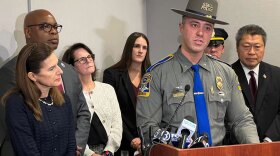The Connecticut Judicial Branch is more diverse than it was 40 years ago, but outreach to marginalized communities is still needed, said Chief Justice Richard Robinson as he launched Diversity Week on Monday.
He is the first African American to hold the top job in the state’s top judiciary.
Robinson knows what it is like to be a member of a marginalized community, he told judicial branch staffers at the ceremony at the state Legislative Office Building in Hartford.
He gave the example of a couple of weeks ago when he was pulled over by police while driving an official Judicial Branch car.
“I’m not sure why he stopped, but he said the license plate on the car was not valid or something like that,” Robinson said.
As a Black man, it was a tense situation for him.
“What bothered me about that interaction was when he pulled me over they treated me one way. The two officers got out of the car. One came to the post where I could barely see him. One stood behind the driver’s door where I could barely see him. They were afraid of me. And then when they saw the judicial sticker, they were a little less afraid. And then when I told them I was the chief justice, a little less afraid. But the entire time I kept thinking I could die here,” Robinson said.
That’s why it is important to have inclusion in courthouses, offices and other Judicial Branch facilities. “Diversity, equity and inclusion is not about being woke, or being hypersensitive or kowtowing to anyone,” he added.
The branch is a different place than it was 10 years ago when the diversity program started.
In 1983, the Judicial Branch was 9% people of color; now it's 37%. The state also now has a gay woman as chief court administrator, two female executive directors and its first female probate court administrator. And the branch has a DEI office that was created last year.





